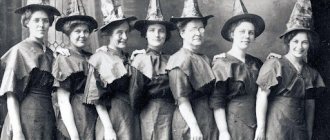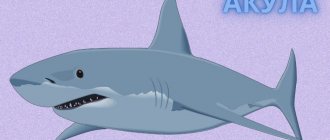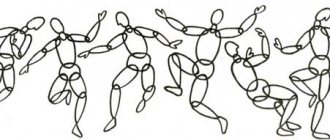Lesson notes for educators and teachers
Topic: Geometric shapes
Goal: To consolidate concepts about geometric shapes. Summarize knowledge about the properties of shapes
(color, size). Strengthen ordinal counting within 10. Enrich your vocabulary.
Develop logical thinking, tactile and long-term memory, proper breathing, listening skills, fine motor skills.
Cultivate accuracy and self-control.
PROGRESS.
Psycho-gymnastics.
-Look how many guests have come to us, say hello to the guests. -Sit more comfortably on a chair, close your eyes and listen - how is it in our office? Quiet or loud?
-Now close your eyes and listen to what is happening behind the door. - Loud, why loud?
-Someone is knocking on our door, someone is probably late for our lesson. Let's invite a guest.
-Look, this is a box, what geometric shape does the side of the box resemble? And this?
A box with something written on it. -Let's read it! Can you help me?
- Parcel for Maxim.
- Who is Maxim? So this is for you. Let's see what's inside it. -This is a package of tasks and we need to complete them.
Envelope No. 1
-There are geometric shapes in the envelope, name them.
-Using the same figures, you can create new geometric
figures.
-Attach these figures first. Then, without looking into the bag, by touch find the figures that I will name.
-Well done, you completed the task! Let's move on to the next task
-Take the envelope with the number 2 written on it.
Envelope No. 2
-What do I have? This is a frame. What shape is it? What geometric shapes does it consist of?
-Now we will make a square from different figures. What color is the square, what shapes did you make it from, how many corners, how can I say it differently?
- Well done, you did it. Let's put our squares in the parcel.
-Now what number is the next envelope?
Envelope No. 3
-Look what's in the envelope? We need the lace for the next task.
-After all, with the help of geometric shapes, you can not only create new shapes and assemble the shapes themselves using different ones. But the objects of our life themselves symbolize geometric shapes. Now, we need to match the figure with the object using laces.
-Well done! Let's move on to the next task. Envelope with number 4
Envelope No. 4
-What is this? What do we need the tube for? You can also breathe into it.
-You will blow into the tube so as to roll the ball to the top and hit
hole.
Envelope No. 5
-Here we have drawn figures, you need to draw them with the help of a ball, but at the same time close your eyes.
-Well done!
Envelope No. 6
-We have a marker. And we need to solve examples.
-I really liked the way you solved the examples.
-Let's see what we have in the next envelope under the number 7
Envelope No. 7
And we have geometric shapes. Tell me we can make something out of
these figures. Build what you want.
What or Who did you depict? What else can be built?
And what's in the last envelope? What number...
Envelope No. 8
And here is a cutaway picture. Let's collect it. And we will have the task on the computer.
- Help the car get to the house by choosing the correct path from the shapes
- Help the car get to the house by choosing the correct path by color.
- Look at the lights of the house and remember them. Now put them the way they were for me.
4. Tell me what time of year it is? It's cold outside and icicles will appear soon. I already have icicles, I just need to paint them.
Result: name the figures we talked about. Which group can we unite into? What is another name for them? What are these figures?
Maxim, look at our parcel - it has become a great parcel of your knowledge.
Source: https://konspekty-zanyatij.ru/uchebnye-materialy/konspekt-zanyatiya-po-femp-v-starshej-gruppe-geometricheskie-figury/
Target:- Study of similar and dissimilar figures (circle, square, triangle) their size and shape.
- To develop the ability to see a contour drawing with an overlay.
- Development of geometric imagination and creative abilities.
- Developing the ability to see the whole before the parts.
Material:
Three squares and 3 circles of different sizes and colors, 3 triangles of different sizes, shapes and colors; 3 squares, 3 circles of the same size and shape; 3 triangles of the same size and different shapes from the “Geometric Chest” manual. Each person has three right triangles on the table, cut out according to this pattern:
Kusener's sticks. “Pack your suitcase” guide.
Part I. Fairy tale “How the wizard Putalka changed geometric figures.”
Progress of the lesson
“The wizard Confusion had a magic wand with which he could increase and decrease any things and even geometric shapes. He had 3 squares, 3 circles and three triangles. Note:
the triangles must be different in size and shape.
He took his magic wand and enlarged one square and reduced the other. And he ended up with identical squares...”
Replace the squares so that they are the same. Check their equality by overlapping. “... Then he took the circles and did the same with them. He decided to do the same with triangles. – Are the triangles the same? Let's check it with an overlay. Why don't the triangles match? After all, Confusion enlarged the small triangle and reduced the large one. They are the same in size, but in shape?
We will check that they are all different in shape (demonstrate again by overlapping triangles).
– Are circles and squares different in shape or the same? (Show them in overlay)
Part II Game “Make an Object from Figures”
From 2 small and 1 large triangles, fold: herringbone, house, square (no pattern!).
Part III. Physical education session with movements “Seasons”.
The teacher reads a poem to the children, showing the movements. Then the children, together with the teacher, perform them, pronouncing the words.
We play snowballs in winter
(
Children “throw snowballs.”) We plant seeds in the spring, (“They sow.”) We rest in the hot summer, (We fan ourselves.) In the fall we pick fruits. (“They pick fruits from the tree.”)
Part IV Game “Part and Whole”.
The teacher divides the group in half: one gives cards with a picture of the whole, the other with a part. Children must find a part of the whole by working in pairs.
Part V. Game “Pick up the lid.”
The teacher gives half the group bottles or jars without lids, and the other half - lids from them. Children with caps must find matching bottles and screw them on with their own caps. The game is repeated, but now those who had caps get bottles, and vice versa.
Part VI Game exercise “Find”.
The children have Kusener sticks on their tables. Find the longest stick and the shortest one, name their colors. Children make a colored ladder from sticks, the teacher helps them. The colors of the sticks are called.
VII part. Game “Kusener’s Sticks”
Make a house for a bunny out of Kusener sticks (without a sample). At the end of the task, the children walk around and see what kind of houses they turned out to be.
Part VIII Game “Card exercises”.
The teacher shows cards with schematic representations of movements, and the children perform them.
IX part. Game “Geometric chest”.
The teacher draws a sequence (“snake”) of geometric shapes on the board: for example, circle, square, triangle, circle, square, triangle. Children should continue the row on their table using the figures from the Geometric Chest manual.
X hour Game “Pack your bags”
.
The teacher tells them that they need to help pack things into suitcases for the trip, but each item should only be in the suitcase that has its outline depicted on it. The teacher gives each child a card with a picture of a thing, then lays out “suitcases” on the carpet. Children take turns and look for which suitcase to put the item in.
XI hour. Result.
- Well done! You did a good job. - Guys, did you like working out? – What games did we play? – What was difficult to do? – What’s easy?
At what age can you start learning geometric shapes?
A child’s knowledge of the world around him begins with his perception of objects and phenomena. At a very young age, children are not yet able to understand the shape of an object separately from itself. In fact, they experience them using various senses: not only by sight, but also by touch, as well as by pronouncing various words.
Study Kit
For your information! Comparison plays an important role in this process. Having seen a new object, the baby can determine whether it is similar to others already known to him.
In the process of development, a child perceives the geometric shape of objects differently. Small children see and feel them as a whole, without highlighting the shape. That is, each ball is not a ball for them, but a special object.
At an older age, the baby can already compare objects, determining their similarity or difference. Gradually he learns to properly highlight the elements of the form. In older preschool age, he already understands what a geometric figure is and what properties it has.
However, the development of geometric perception and thinking does not occur automatically, but through the learning process.
It is important to note that obtaining initial geometric knowledge and learning to count is for informational purposes only. At the same time, there is no systematic study of geometric knowledge. No precise definitions are considered at this time.
Important! In the process of studying, children learn to recognize and study figures, draw them, and describe them in Russian.




